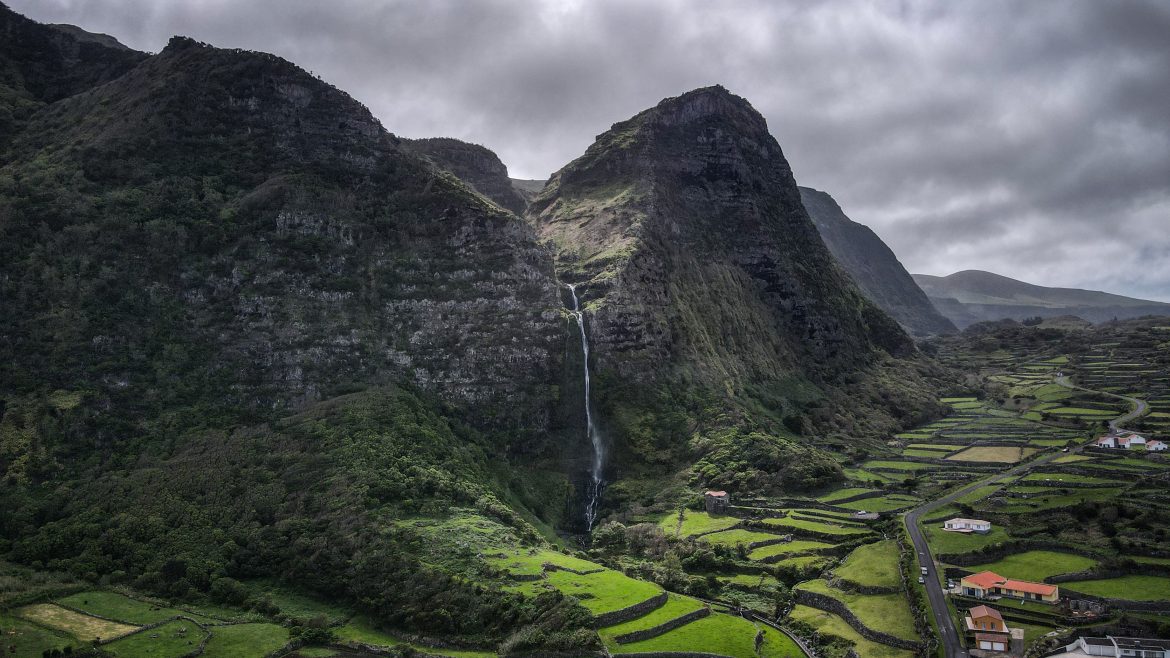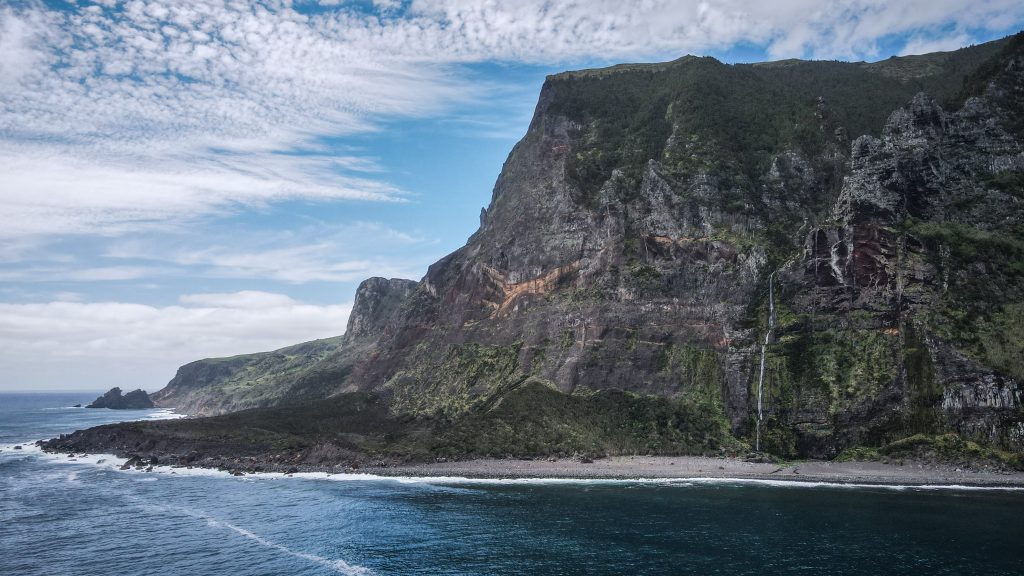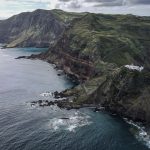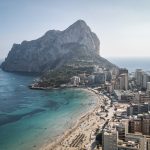Together with tiny Corvo, Flores forms a Western group of the Azores archipelago. Diogo de Teive and his son João de Teive discovered the island in the late summer of 1452. As a reward, they received the concession of the sugar monopoly on Madeira.
Interestingly, Flores Island is the westernmost point of not only the Azores Archipelago but the whole European continent, even though together with Corvo they are part of the North American tectonic plate and not European plate like the rest of the Azores islands.
How long to stay?
I would say that 3-4 full days should be enough to visit all the interesting places on the island and do a couple of hikes. Of course, it depends on the weather which is very unpredictable in this region. If you are unlucky, the interior of the island, especially the lakes may be covered by clouds for the entire duration of your stay. Check the weather frequently and always have a backup plan. It’s usually less cloudy closer to the coast.
The mobile app SpotAzores is a great tool for monitoring weather situations in the Azores archipelago. I used it every day when I was there and I seriously can’t imagine travelling without it!
Where to stay?
Due to my remote work, I always look for a private room with a fast internet connection. The best quality to price ratio offered lovely host Valentina on her Airbnb listing. The place is located in Fazenda das Lajes, therefore a car is needed to get around. There is access to a fridge, washing machine, a well-equipped kitchen as well as free parking. The room was simple but nice with a shared bathroom and toilet. Fully recommended!
Getting around the island
As on all the other Azores islands, renting a car is essential to reach all places. I used the services of Autatlantis several times and I can fully recommend that company. The price was always around 16-20 EUR per day (without any extra insurance) and the cars I had were Toyota Yaris, Citroen C1, or Smart. Bigger ones are available too, of course at a higher price. Pick up and return were smooth and quite fast.
Another popular rental company in the Azores region is Ilha Verde, however, customers’ opinions are mixed and I have never used them.
If you don’t have a driving license, you can try hitchhiking but you need to be patient and quite lucky. Alternatively, get in touch with one of the taxi drivers and negotiate a daily price. I can recommend Silvio Medina (+351 918 804 210), knowledgeable and English speaking.
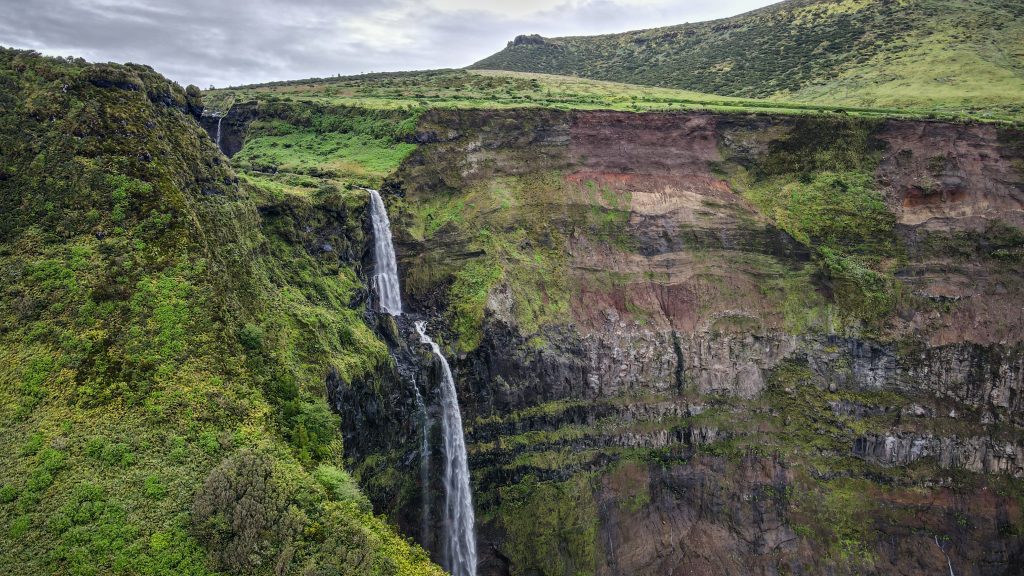
Tips
- The weather is unpredictable and you have to be prepared for anything. Always have with you a waterproof jacket and umbrella. Install mobile app SpotAzores and don’t go to places that are totally covered in clouds. You will lose time and won’t see anything anyway.
- Book your car in advance in the high season. I was travelling in the Azores between April – May so it wasn’t a problem to get a car from one day to another, however, I can imagine that in high season it could be a problem, especially on the smaller islands.
- Drive carefully, especially in the fog. It’s pretty normal that cows, sheep or goats stand very close to the road or simply walk on it.
- If you go hiking, download GPS files and maps from the official website Visit Azores and have them on your phone just in case. In general, trails are well marked but in a dense fog, it’s not that difficult to get lost.
- Don’t be afraid of hitchhiking. Many trails are linear, which means that you need to get back to the starting point. You can walk the same way or try to save your legs. On some islands, the traffic is minimal but once the car comes, it is almost certain that the driver will stop and help you out.
Santa Cruz das Flores
Island’s main town is located on the east coast with an airstrip that runs basically just next to the main street. There are a few sights worth seeing, all within walking distance. Plan around 3-4 hours to discover the area.
Start at Flores Museum which has documented the most significant moments in the island’s history from its discovery to the present day. Then, check out Igreja de Nossa Senhora da Conceição, which is a beautiful church standing just in front of the museum.
A little bit further on, towards the coast, you will find natural pools (Piscinas naturais de Santa Cruz das Flores). Good place for a swim if the weather is nice. Whale Factory (Fábrica da Baleia do Boqueirão) at the northern end of the town presents a rather depressing story of whale hunting, which luckily nowadays changed into whale watching.
Two viewpoints worth mentioning and within walking distance are Miradouro da Costa Nordeste and Miradouro do Monte das Cruzes.
Other sights
Poço Ribeira do Ferreiro – Without a doubt, it is a must-see on Flores Island. The “wow effect” is guaranteed and I had it every time I saw it, even from the distance. The waters of the various waterfalls come down from the steep cliff surrounded by intense Azorean vegetation. It’s especially breathtaking after heavy rains. The walk from the parking lot is easy and takes around 10 minutes.
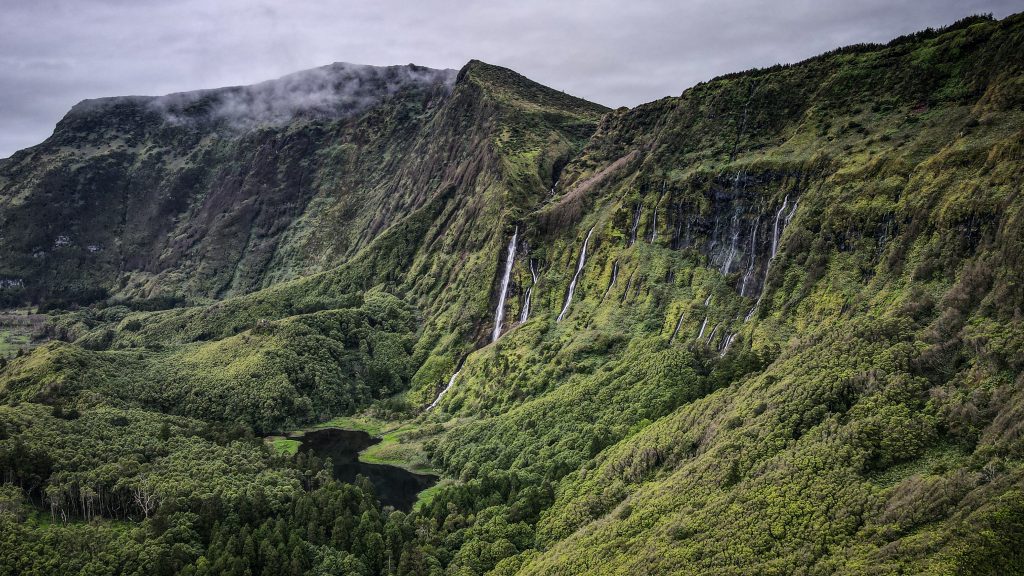


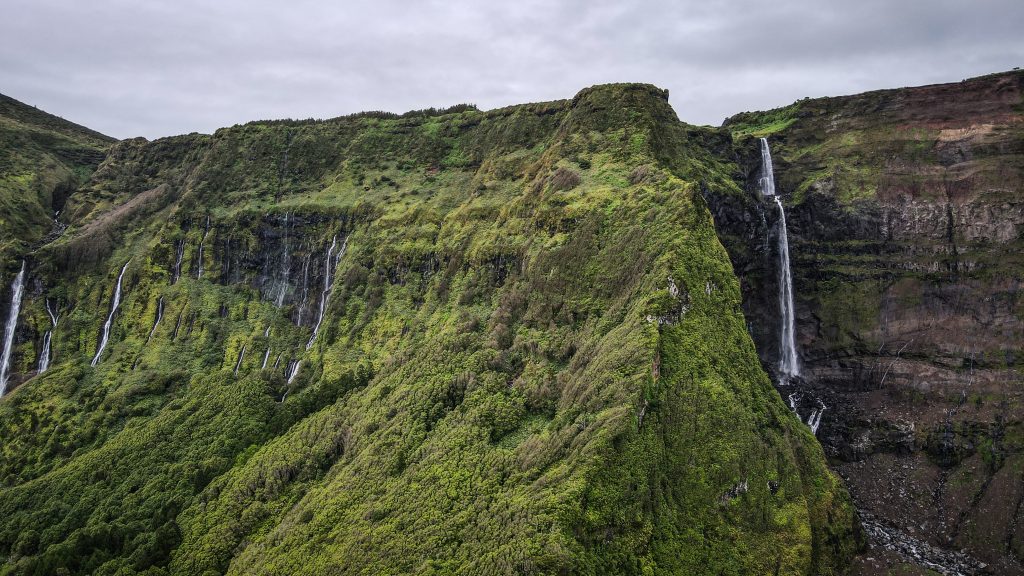
Fajã Grande – famous for many imposing waterfalls bringing water from the high plateau to the coastal plain. Cascata do Poço do Bacalhau, located in the northern part of the village, is the most spectacular one. Natural pools formed by rocks in the ocean are perfect for those willing to cool down. Additionally, it’s a good hub for hiking trails that either start or end there.
Rocha dos Bordões – Geological formation formed by large columns of basalt. There is an official viewpoint and other small parking places along the road where you can pull over. Don’t miss the beautiful waterfall Cascata da Ribeira do Fundão.
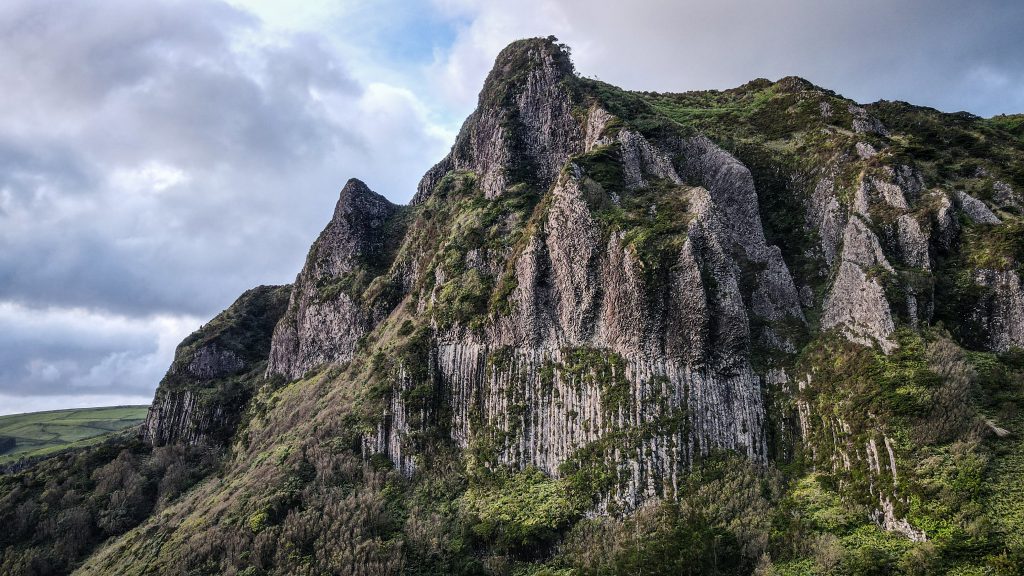


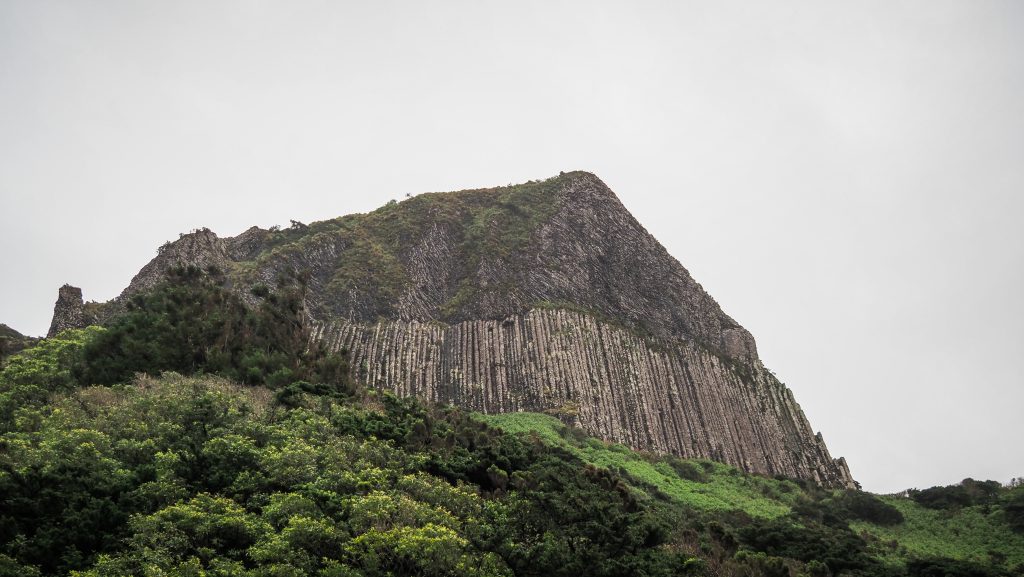
Reserva Florestal Natural do Morro Alto e Pico da Se – Morro Alto is the highest point of the island of Flores, Azores. The trail can be either walked or taken by car. Other than that, it’s all about crater lakes: Negra and Comprida (best seen from Miradouro Lagoa Negra e Lagoa Comprida) as well as Branca and Seca. Simply nature at its best!
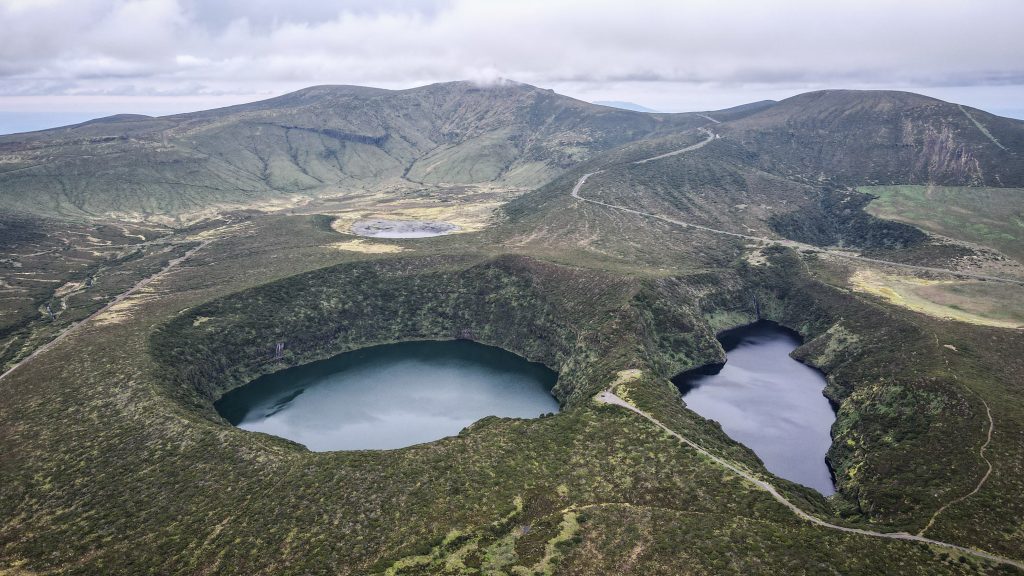
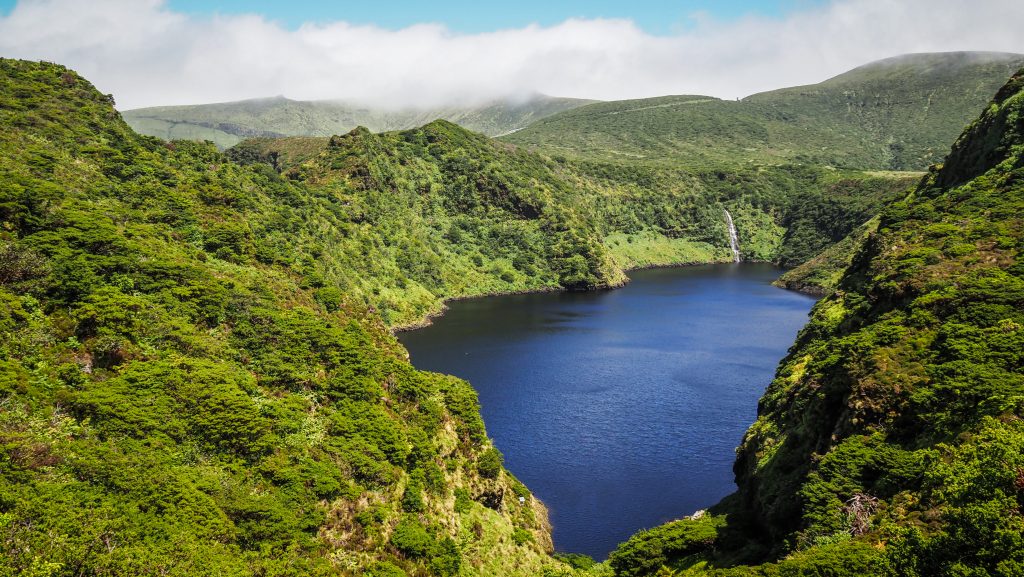

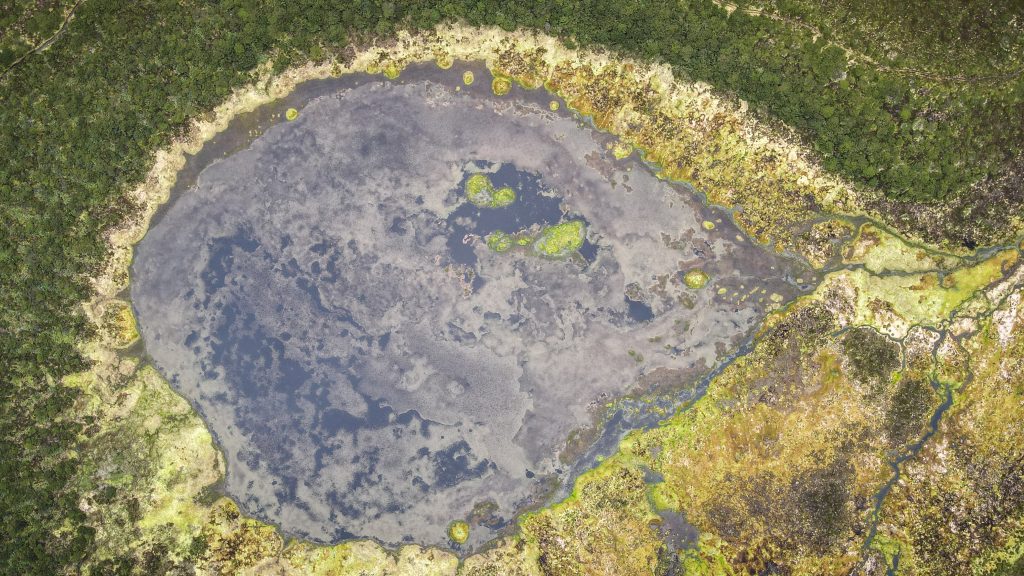
Caldeira do Mosteiro – The name comes from the fact that the village was located inside a volcanic crater. Today, it’s totally abandoned (its last inhabitant left in 1992). Mainly due to the lack of electric power and running water. There are plans to revitalize that area and adopt for rural tourism but so far it is simply a cool photo spot.
Caldeira Rasa e Funda – Another two amazing crater lakes. There are also two viewpoints worth mentioning: Miradouro Caldeira Rasa e Funda, located on the road just between the lakes, and Miradouro Lagoas Rasa e Funda, a bit farther away.
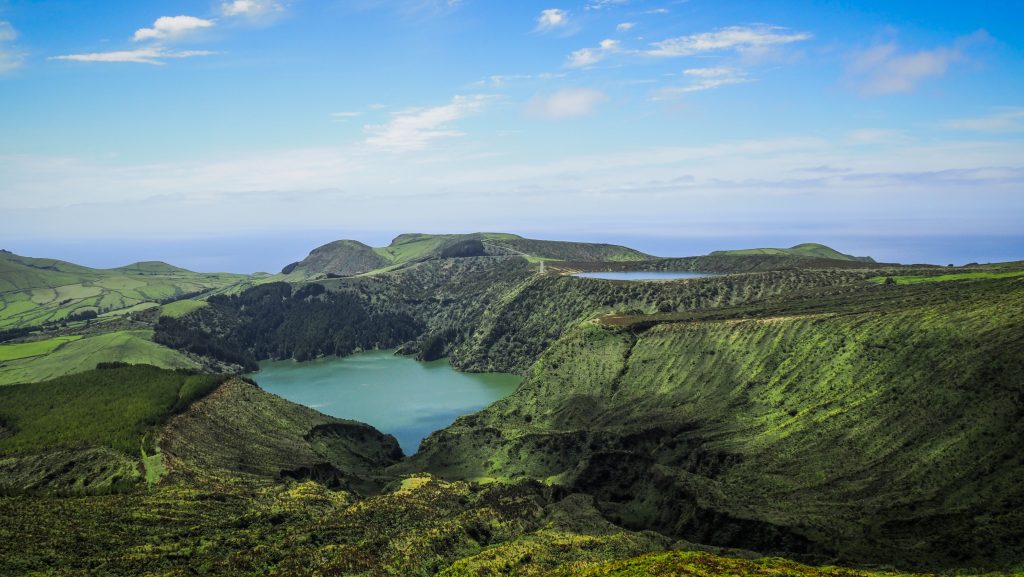
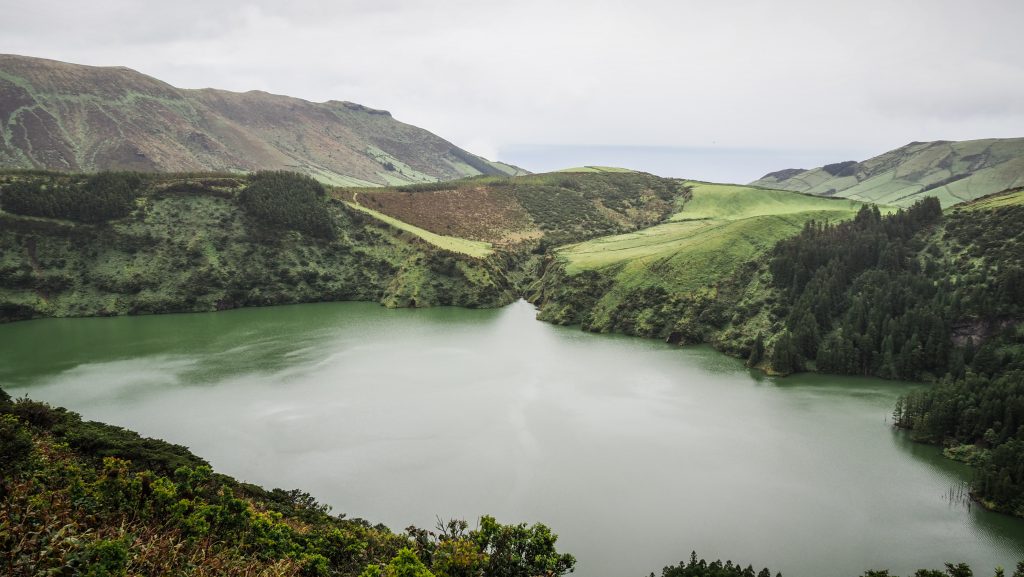
Fajã de Lopo Vaz – Let me remind you that fajã is a flat surface near the sea, created from collapsing cliffs or lava flows. In this particular case, it’s hard to have any doubts about the origin. High cliffs are just in front of your eyes when you are approaching this place following the PRC04 hiking trail. Most probably, it was the first place inhabited on this island. There are a few houses but on the day of my visit, I didn’t meet anyone.
Ponta Delgada & Farol de Albarnaz – Small community that is located on the northern coast of the island with great views on Corvo. There is nothing much to do in the town itself but it’s worth visiting Ponta do Albernaz, where the lighthouse stands. Miradouro da Baía de Além is closeby and provides great panorama of Maria Vaz Islet. On the way out, pull over next to Pico do Meio Dia, another viewpoint located along the main road ER1-2.
Lagoa da Lomba – another small lake of volcanic origin, situated a bit more further away from all the others, however, it’s still worth visiting.
Viewpoints (Miradouro)
As on every island in the Azores archipelago, there are plenty of viewpoints and usually, they are easily accessible by car. Just look for the sign ‘Miradouro’ which in the Portuguese language means viewpoint. Here is the list of the most popular ones but of course nice views are nearly everywhere and it’s easy to find a stunning ‘no-name’ spot.
- Miradouro da Costa Nordeste
- Miradouro do Monte das Cruzes
- Miradouro Lagoa Negra e Lagoa Comprida
- Miradouro Lagoas Rasa e Funda
- Miradouro Arcos Ribeira da Cruz
- Miradouro do Ilhéu Furado
- Miradouro dos cedros
- Miradouro da Pedrinha
- Miradouro sobre o Porto e Baía de Ponta Delgada
- Miradouro da Baía de Além
- Miradouro do Portal
- Miradouro do Lajedo
- Miradouro Craveiro Lopes
- Miradouro Das Pedras Brancas
- Miradouro dos Frades
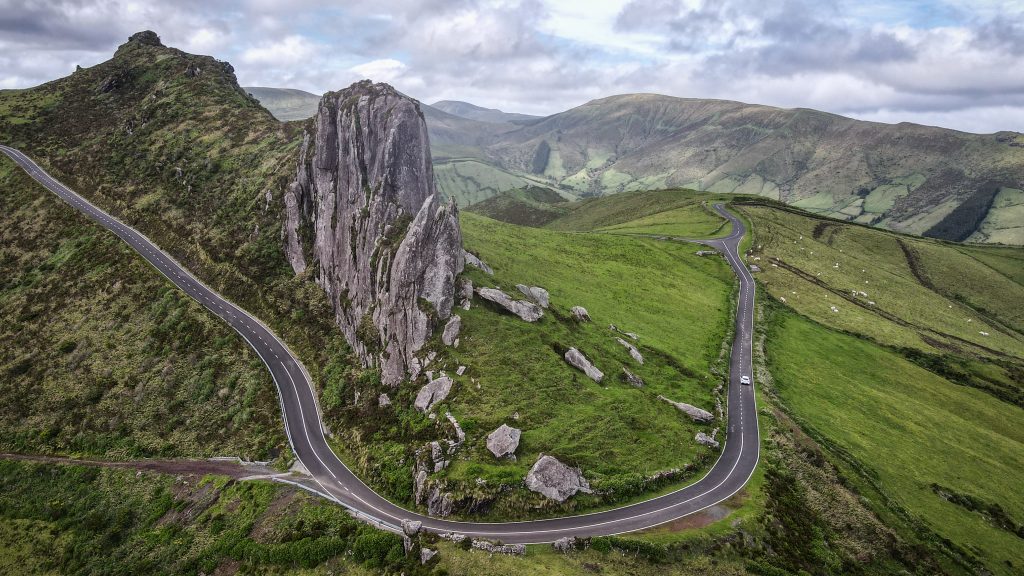
Hiking trails
PR01 FLO – Faja Grande – Ponta Delgada
I parked my rental car next to Igreja de Nossa Senhora Do Carmo. It was cloudy, but most importantly it didn’t rain and there was an optimistic forecast for the next couple of hours, including the sun! After about 1 – 1.5 km of moderate uphill walk, the ascent to Rocha do Risco started to be way steeper. The effort was rewarded though, as the views from the coastal path were simply great. Don’t forget to look back from time to time as Faja Grande looks magnificent from every perspective. On the other side, the view of small Corvo island will accompany you for the rest of the hike to Ponta Delgada. Depending on the time of the year, there could be some streams to cross and the path can get muddy, so be careful.
Once you reach asphalt road, turn left and continue down the road. It is worth taking a small detour to see both Miradouro da Baía de Além as well as Farol de Albarnaz, which is Europe’s westernmost lighthouse. From there, it’s an easy walk on the asphalt road to the final destination.
The track is linear and coming back to the starting point in Faja Grande might be complicated. If you don’t want to hike back, you can try your luck and hitchhike, which was my idea as well. However, I was waiting over an hour and the road was absolutely dead with no cars coming at all. In the end, I gave up and called a taxi.
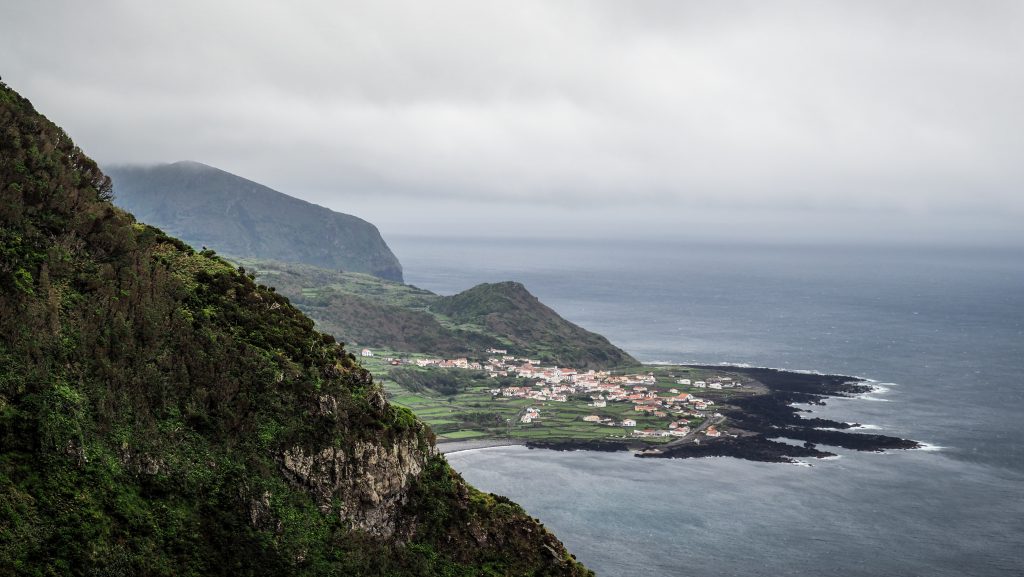
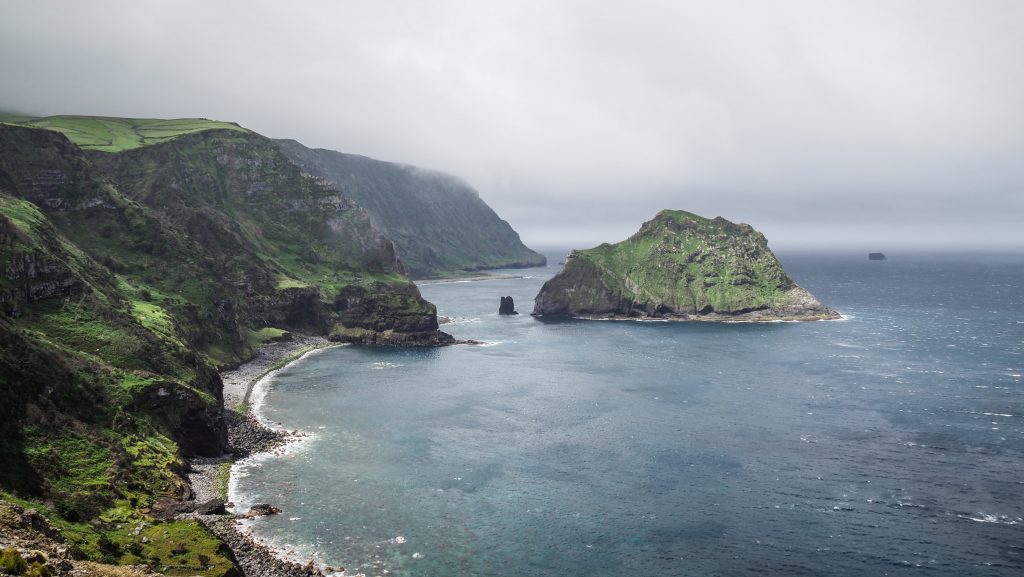
PR02 FLO – Lajedo – Faja Grande
I have to say that on the day of the hike, I had really bad rainy weather which definitely influenced my final judgement. In many parts, the track was overgrown, muddy and slippery. In the first phase, there are good views of Rocha dos Bordoes, which is the best-known rock formation on the island.
Cross the village of Mosteiro and continue to one of the most interesting places along the trail – the village of Caldeira do Mosteiro. It was finally abandoned in 1992 due to the lack of electricity and running water. Currently, it seems that there are plans to renovate it and turn it into a place for rural tourism.
The next stops should be Miradouro do Portal and Fajãzinha but soon you will reach a sign indicating the detour to Poço da Ribeira do Ferreiro. This is by no means, the most spectacular waterfall in the Azores, so don’t hesitate. Go there, but not only go. Sit down and spend some time. Admire.
The remaining distance is mainly through farmlands with plenty of small stone walls, very typical for the Azores. The grande finale is in Faja Grande, with also pretty grande waterfall – Poço do Bacalhau.
The logistics problems are similar to the ones at PR01. As it’s a linear track, I left the car in Faja Grande and took a taxi to Lajedo. If you have more time, try to hitchhike. Faja Grande is a very popular touristic place so it should be much easier to get a ride than in Ponta Delgada. My driver was Silvio Medina (+351 918 804 210). Nice and English speaking guy but the service itself is rather expensive.
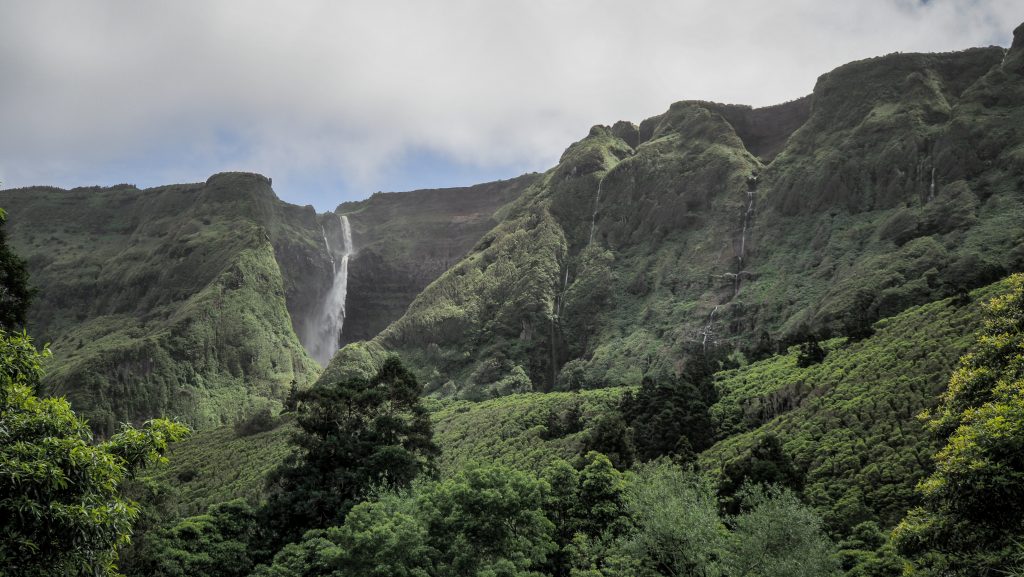
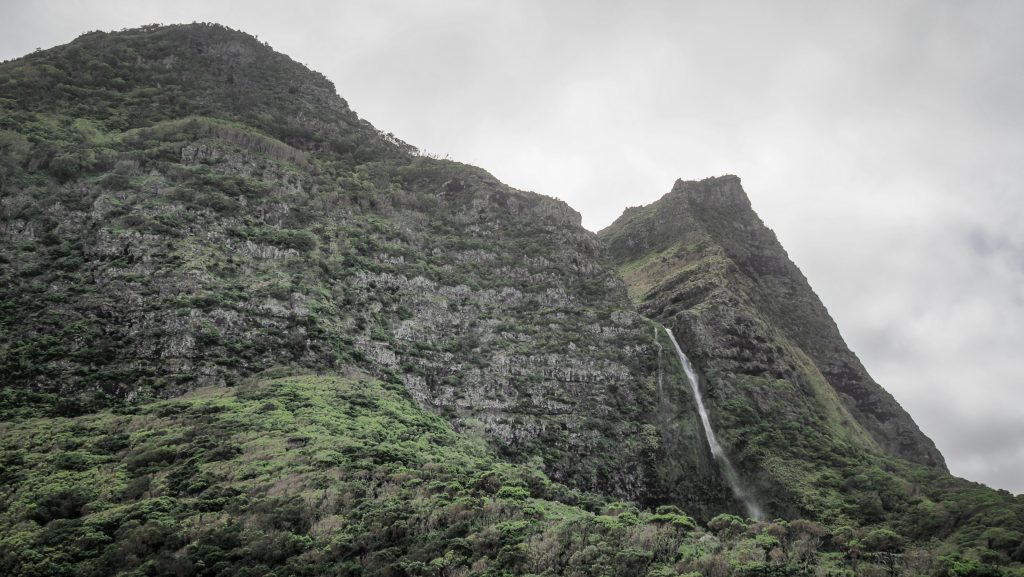
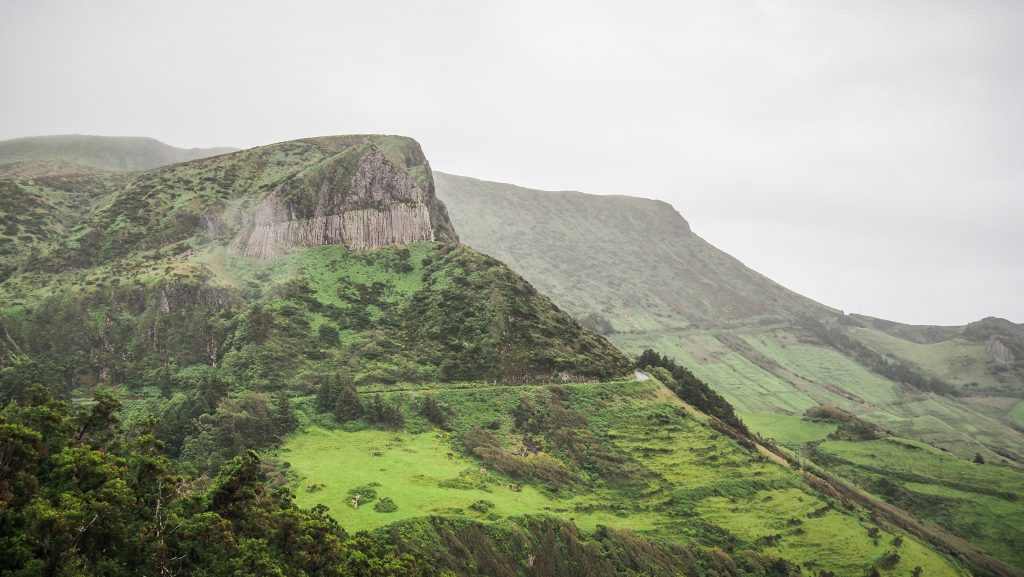
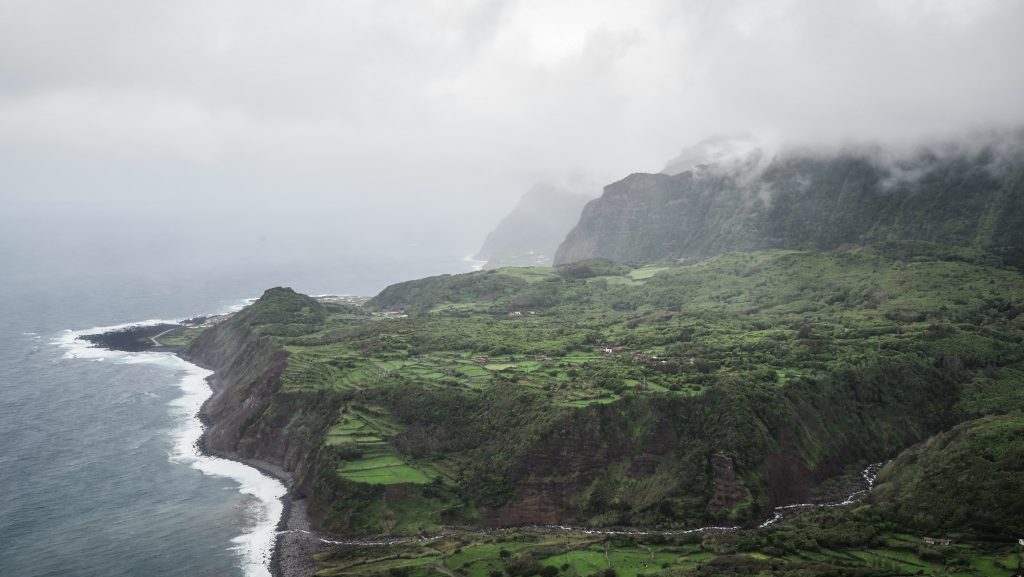
PR03 FLO – Miradouro das Lagoas – Poço do Bacalhau
The track starts at one of the most popular lookouts on the island, between lakes Funda and Comprida. Continue along the right side of Comprida Lake towards Seca Lake and then turn left into a very muddy land road with views of Branca Lake on your right. Soon, you will reach a wide gravel road. Follow it until the turn to the left. Admire panoramic views of Fajã Grande as well as Fajãzinha and start your descent down the cliff until you reach the first one. Don’t forget to make a short detour to Poço do Bacalhau. Magnificent waterfall!
The official difficulty of the track is hard, mainly due to steep descent at the end, but I would still say it’s rather medium.
Again, it’s a linear track so if you leave your car at Miradouro das Lagoas, then you have the option of getting a taxi or hitchhiking back there.
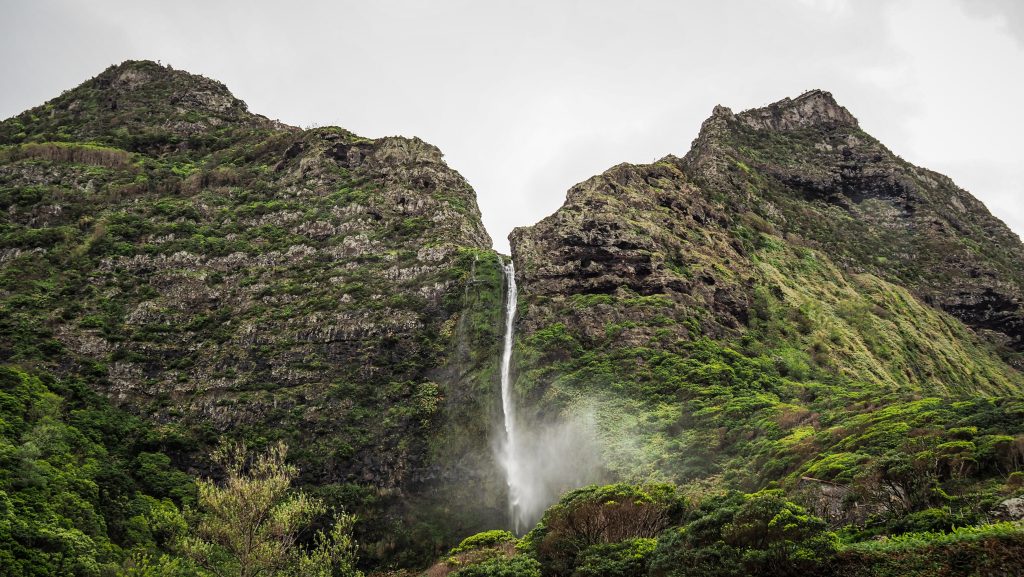
PRC04 FLO – Fajã de Lopo Vaz
Park your car at the picnic area and start the descent towards the fajã. The views are good from the very beginning. Once down there, take your time to explore the black sand beach and walk around small houses. Turn right behind the first of them and then continue on a stone path towards the stony beach with huge cliffs and a waterfall just in front. If you are lucky, you will have all Fajã de Lopo Vaz to yourself and then it’s truly magical. In the end, return to the car the same way you came.
Fajã de Lopo Vaz is really a wonderful place.
Great Route of Flores
Challenging but extremely rewarding track for anyone interested in long-distance hikes. It goes from Santa Cruz das Flores to Ponta Delgada (21 km) and then from Ponta Delgada to Lajedo (26 km, along PR01 and PR02). The distance could be split into at least 2 or even 3 days with overnight stays in Ponta Delgada and Fajã Grande.

